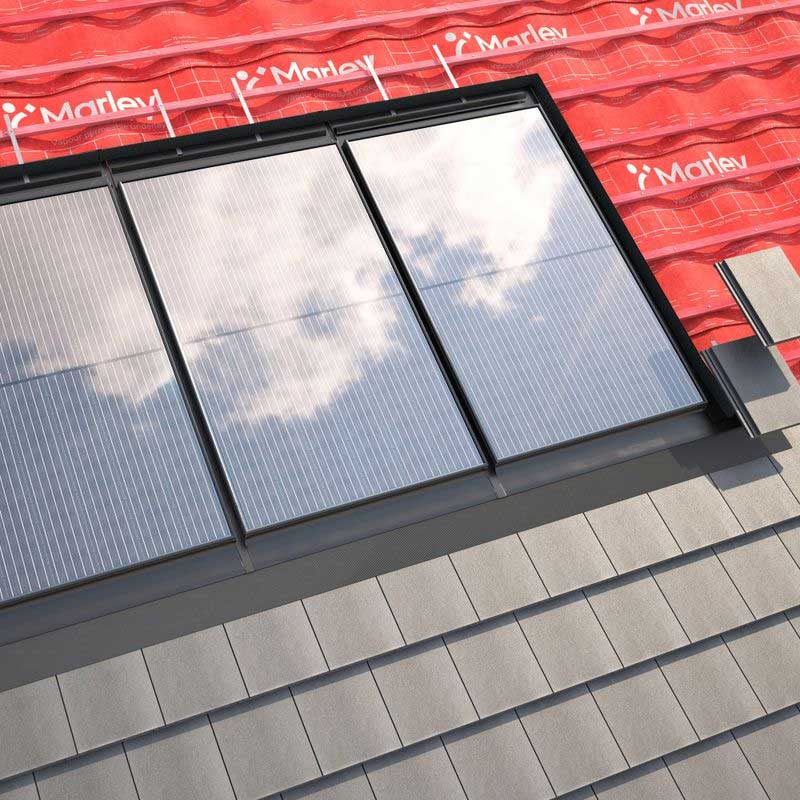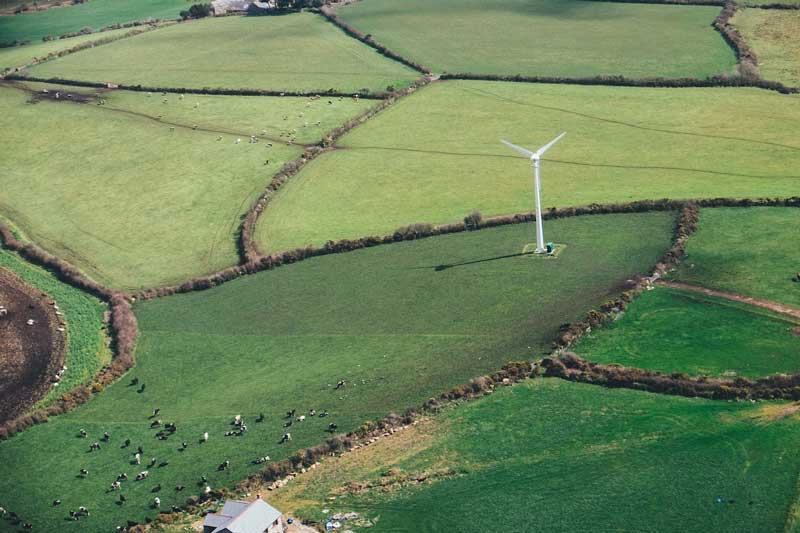Although the initiative closed in Great Britain on 31st March 2021, the Non-Domestic Renewable Heat Incentive Scheme (NDRHI) may apply to you for several reasons. Specifically around accreditation or registration after the closure of the scheme. This includes if you have been granted an application extension or hold a Tariff Guarantee, which extends the date of commission.
We’ll explain further in the guide how you can check your eligibility, what the scheme is and the various changes the scheme has gone through over the years to keep you updated on the latest. We’ll also explain how to calculate non-domestic RHI payments to ensure you have an efficient method to manage your instalments.
Table of contents
- What is the non-domestic RHI scheme?
- Am I eligible for the Ofgem non-domestic RHI?
- Who can use the NDRHI scheme?
- How do apply for the NDRHI scheme?
- I’m already part of the NDRHI scheme, how do I stay compliant?
- Managing your NDRHI – How does it work?
- So, what is renewable energy?
- Who controls the scheme budget (degression)?
- How to calculate non-domestic RHI
- My NDRHI is incorrect – what can I do?
What is the non-domestic RHI scheme?
NDRHI is an Ofgem government scheme for businesses, the public sector and non-profit organisations. It was made to help these areas pay for the installation of renewable heat technologies.
More importantly, it is a way to help reduce carbon emissions (e.g., Carbon Dioxide (CO2). The UK has renewable energy targets which this scheme hopes to contribute towards.
If, at any point, you do not understand the terms used, view the Ofgem glossary dedicated to the scheme.
How do non-domestic RHI payments work?
If an installation is accredited, quarterly payments will be received over the course of 20 years. How much a business is paid will depend on the amount of eligible heat generated and only applies to those within England, Scotland and Wales.
The types of renewable heating you can claim for are:
- Biomass
- Heat pumps (ground source, water source and air source)
- Deep geothermal
- Solar thermal collectors
- Biomethane and biogas
- Combined heat and power (CHP) systems
For Northern Ireland, this has a separate scheme which was closed to new applicants on 29th February 2016.

Why is Ofgem involved in the NDRHI scheme?
Ofgem are the administers for the NDRHI scheme. This is on behalf of the Department for Business Energy and Industrial Strategy (BEIS). Their role is to:
- Assess and process applications to the NDRHI scheme.
- Process amendments made to the installation.
- Review quarterly periodic data and issue payments accordingly.
- Manage fuelling and sustainability requirements for accredited installations.
- Publish reports and data.
What changes have been applied to the NDRHI scheme?
BEIS does periodic reviews of the NDRHI scheme policy. This means rules can be adjusted and affect existing and new participants.
The latest changes can be reviewed via the Ofgem website under ‘NDRHI Scheme Changes’.
Am I eligible for the Ofgem non-domestic RHI?
The official closure of the scheme was on 31st March 2021. However, there are some cases where you could apply for the scheme.
Due to COVID–19, the deadline was extended from 31st March 2022 to 31st March 2023 and was applicable for tariff guarantees and extension applications. If you already have a tariff guarantee or successfully made an extension application, this deadline applies to you.
You can find out more about the closure requirements via Ofgem’s ‘NDRHI Closure’
Case one: A stage two tariff guarantee has been issued
If a stage two tariff guarantee has been approved and issued, you have a chance to move on to submission for stage three of the application.
Additionally, if the tariff guarantee is being held in a queue until the budget is available, you can also be considered for stage three submission.
Case two: You’ve been granted an extension
If an extension has been granted or you have applied for one and it is held in a queue until the budget becomes available, you can likely continue with the process.
Additional circumstances where applicants may be accepted are as follows.
Ownership of NDRHI-accredited installation has changed
If the NDRHI-accredited installation is sold as an ongoing asset to a new owner. New applications will be required if the installation was relocated during the sale.
For sales of Non-Domestic Renewable Heat Incentive accredited installation as an ongoing asset on the NDRHI scheme, fill in a Change of Ownership (CoO) form via the NDRHI register.
The NDRHI-accredited installation has been relocated
For this reason, you must inform Ofgem of this change within 28 days of de-commissioning. Once it is re-commissioned at the new location, you must submit a new application for accreditation.
If needed, Ofgem has a dedicated Replacement and Relocation team to facilitate transfers of your accreditation between installations/locations to ensure you maintain the accreditation.
You need to replace the NDRHI-accredited installation
For replacements, you must inform Ofgem within 28 days of de-commissioning the original plant. Once the new installation is commissioned, you must submit a new application for accreditation.

Who can use the NDRHI scheme?
First and foremost, you must be in one of the above circumstances. If any apply to you, you can move on to viewing the main requirements.
To use the NDRHI scheme, you must be able to demonstrate that your installation meets all applicable energy requirements. These requirements are listed below.
- You must own the installation or have permission to act for other owners in cases where several are involved.
- The plant must be an eligible renewable heat technology type and size.
- No public grants can be used to fund any parts of the installation (unless it has been repaid).
- The plant must have been new at the time of installation (this includes specific ‘integral equipment).
- The plant must use liquid or steam as a heat delivery medium.
- The metering arrangements must:
- Include the right type of meter(s).
- Be correctly calibrated.
- Be placed in the right locations.
- And every installation will require at least one MID Class heat meter.
- The installation must not only provide heating to single domestic sites.
- The plants must provide heat for at least one eligible heat use.
If the plant uses solid biomass, solar collectors or heat pumps less than or equal to 45kWth, it must have Microgeneration Certification Scheme (MCS) certification or the equivalent.
How do I apply for the NDRHI scheme?
Applications are closed as of 31st March 2021. However, if you are eligible for dealings after the closing date, you can view a template for application on the Ofgem website.
For a simple step-by-step process, discover our guidance below.
Step one: Prepare for the application.
Ofgem has a selection of help sheets you can view to assist you with the application. They also have a guide to the NDRHI questions to help you work through each question at a time.
Step two: Make sure you have the right evidence and documents needed
Certain documents and evidence will need to be submitted alongside the application. Ofgem advises using a computer is the best way to do so (not a smartphone or tablet).
You will be asked to provide a signatory to complete the form personally because your bank and personal details are required. Ensure the name for personal details in the application is the same as the account being used. If you’re uncertain, use the Equifax website to check the information your bank holds.
Discover additional information in Ofgem’s easy guide to applying.
Step three: Don’t make these mistakes!
Common mistakes can slow down the application process. Knowing what to avoid can prevent this. As such, here are the common mistakes you must avoid.
- The application is incomplete – check your application thoroughly, making sure all documents are filled in and sufficient detail is in the text boxes provided.
- The schematic diagram is poor quality – It’s no good having poorly drawn scribbles, so make sure your diagram is as clear as possible so there is no confusion.
- The Independent Report on Metering Arrangements (IRMA) is poor quality – If the IRMA is not detailed enough or unclear, you will need to obtain another to make sure it demonstrates the metering and measuring requirements imposed by Chapter 3 of Part 2 of the Regulations have been met. You can find out more about this via Chapter 13 of Ofgem’s Volume 1 guidance.
If you need to contact Ofgem directly, you can do so:
Email: rhi.enquiry@ofgem.gov.uk
Phone: 0300 003 2289

I’m already part of the NDRHI scheme, how do I stay compliant?
A requirement of the scheme is ensuring all payment meters and steam measuring equipment is recalibrated every 10 years. Sooner if the manufacturer’s instructions say so.
Failing to follow this requirement will be a breach of obligations and payment can be terminated.
Ten years is the maximum length of time to wait for installation. So, you must make sure the meters are recalibrated or replaced during that period.
How do I recalibrate my meter(s)?
Send them to the original manufacturer or an independent testing lab.
If a meter has been reset to 0, you must provide photos with the date stamped on them within 28 days and an amendment must be made to the NDRHI register.
If the meter(s) has not been reset to 0, you do not need to take photos, but you must still notify the NDRHI scheme providers about the recalibration.
Another note is the meter(s) must have readings recorded before the removal and after the reattachment. Photos for this are highly recommended.
How do I replace my meter(s)
If a meter needs replacing, a date-stamped photo of the replacement must be provided as soon as it is installed. You must also provide an amendment request to the NDRHI register within 28 days.
Meter readings must be recorded before and after the older meter is removed.
Is that all I must do for NDRHI compliance?
Far from it. There are additional requirements to ensure you adhere to the regulations. For further compliance, you must:
- Ensure all payment meters and steam measuring equipment operate continuously.
- Properly maintain, and error check all payment meters and steam measuring equipment.
- Make sure the meters and steam measuring equipment are correctly located.
All this must be done under conditions specific to their accreditation.
Evidence of the meter recalibration or replacement must also be kept. Any invoices, receipts or certificates must be saved for the duration of your participation in the scheme.
Additionally, if you’re using biomass, biogas or produce biomethane for injection, other ongoing obligations will be applicable. This includes keeping all fuel receipts and ensuring storage of the fuel is correct. You must also log the quantity of fuel used (for biomass systems). If you’re harvesting from your own woodland, however, you must make a log of deliveries to the boiler house. This must include a record of where the harvest has taken place.
More information about biomass rules can be found via Ofgem’s ‘rules for biomass page’.
To summarise:
- Tell Ofgem about any significant changes made to your installation or heat use.
- Tell Ofgem about any ownership changes – old owners are to submit a change of ownership form using the RHI register within 28 days and new owners are to contact RHI.accountchanges@ofgem.gov.uk within a year. Further account change information can be found via Ofgem’s ‘Easy Guide to Account Changes’
- Tell Ofgem about any relocation of accredited NDRHI installations within 28 days of the date it was moved – Ofgem will then determine whether the installation should continue having accreditation; if so, payments to you will continue. Further information can be found on page 106 (Guidance Volume 2) of Ofgem’s support.
- Tell Ofgem if you plan to or have had your installation replaced – Ofgem will determine if the like-for-like replacement installation should continue having accreditation. Further information can be found on page 106 (Guidance Volume 2) of Ofgem’s support.
- Compliance declarations with your ongoing obligations must be submitted annually.
If you cannot meet the required obligations, you must inform Ofgem within 28 days of your accreditation.
Payments will be withheld if Ofgem believes you are not complying or your heating system has accreditation based on incorrect information.
If this is the case, you will be informed in writing of any investigation(s). If the investigation confirms non-compliance, sanctions may be imposed by Ofgem. These can include:
- Suspending payments.
- Recovering overpayments.
- And/or potential revoking accreditation under the scheme.
To find out more about obligations regarding maintenance, recalibrations and more, view Volume 2 of the guidance provided by Ofgem.
Managing your NDRHI account – how does it work?
You can view your existing application via the NDRHI register. Through that account, you will also be able to:
- Sign your annual declarations.
- Submit your meter readings.
- Note fuel measurements.
- Update your personal details.
You can view Ofgem’s RHI Register External User Guide for further account advice.
So, what is renewable energy?
Renewable energy is energy that is gained using natural resources. A common source of such energy is wind and sun.
You know those big fan-looking machines you may see on the horizon in fields or hills? That’s wind turbines helping locals use renewable energy.
The same can be said for solar panels. Do you know the big blue shiny panels on the top of houses? Yep! Those are useful too. They use the light/sun, turning it into a usable resource for the home and homes around the area.
Renewable energy is a must-have. As such, in collaboration with Ofgem, this is one of many ways the government has decided to increase the uptake of renewable heat.

Who controls the scheme budget (degression)?
The Department for Energy Security & Net Zero is responsible for the overall scheme budget.
Regular updates from the department are provided on scheme expenditure. They also adjust tariffs accordingly, ensuring the scheme does not breach the budget.
How to calculate non-domestic RHI
As an applicant, you will receive a certain amount per kilowatt hour (kWhth). It is calculated according to whether the system is assigned “simple” or “complex”.
Having said that, if your application was submitted from 24th September 2013 onwards, these assigned titles are “standard” or “multiple”.
Quote from Guidance Volume 1:
“Please note that as of 1st April 2021, the ‘simple’ and ‘complex’ classifications were removed from the
scheme. As such, any installation that was previously classified as ‘simple’ will be considered ‘standard’ as of
1st April 2021 and any system classified as ‘complex’ will be considered ‘multiple’ as of 1st April 2021.”
Payment calculations explained
Once you are familiar with what the terms are (look to Ofgem’s Volume 1 Guidance to find out more), you can now check which payment calculation your payment is being totalled under.
“Simple” system calculation
For a simple system, the formula is as follows:
Tariff level x Heat generated by RHI installation = Payment
“Complex” system calculation
For a simple system, the formula is as follows:
When meter readings have been entered and the three heat data figures are required on the NDRHI Register, you should be able to see the “Eligible Heat Output” (EHO) figure in kWhth displayed on the system after it has been calculated.
That amount given will be multiplied by your tariff which will determine the payment amount.
For a complex system, the formula to determine the level of kWh produced is as follows:
Eligible heat used on the system x Heat generated by RHI installation/Total heat generated on the system.
“Standard” system calculations
If your installation uses ‘standard’ metering for RHI payments, there are two calculations to choose from to find the eligible heat output. These are as follows:
Calculation one –
Tariff level x Heat generated by RHI installation (EHO)
(Where there are NO ineligible heat uses on the system, use NB)
Calculation two –
Tariff level x Eligible heat used by the RHI installation (EHO)
(Where there is NO additional ineligible heat generation plant, use NB)
“Multiple” system calculations
For installations with the ‘multiple’ metering for RHI purposes, there are two calculations to choose from to find the eligible heat output (EHO). These are as follows:
Calculation one –
Tariff level x Eligible heat used on the system x Heat generated by RHI installation/ Total heat generated on the system
Calculation two –
Tariff level x Eligible heat generated by RHI installation x Eligible heat used on the system/total heat used on the system
Tariff rates explained
Tariff rates are adjusted annually to match the relevant price index.
If your application was submitted before 1st April 2016, these will have their tariffs adjusted in line with the Retail Prices Index (RPI).
If your application was submitted on or after April 1st 2016, these will have their tariffs adjusted in line with the Consumer Prices Index (CPI).
If you need more information regarding this, view Ofgem’s Guidance, Volume 2 Chapter 6.
My NDRHI is incorrect – what can I do?
If you’ve gone through the process and think a decision for Ofgem’s NDRHI is incorrect, you can request a review. Examples, where you may want a review, are as follows:
- Your application has been rejected.
- A previously approved application has been revoked.
- A sanction has been imposed.
A request must be made within 28 days of receiving Ofgem’s decision if you want to move forward with a review. This will be acknowledged within 2 working days, with the goal of a final decision being made by Ofgem within 20 working days.
Additional questions or clarifications may be needed by Ofgem who will contact you during this time.
If Ofgem cannot provide a response within 20 working days, they will update you during this period.
You can submit a request using rhi.dispute@ofgem.gov.uk.






